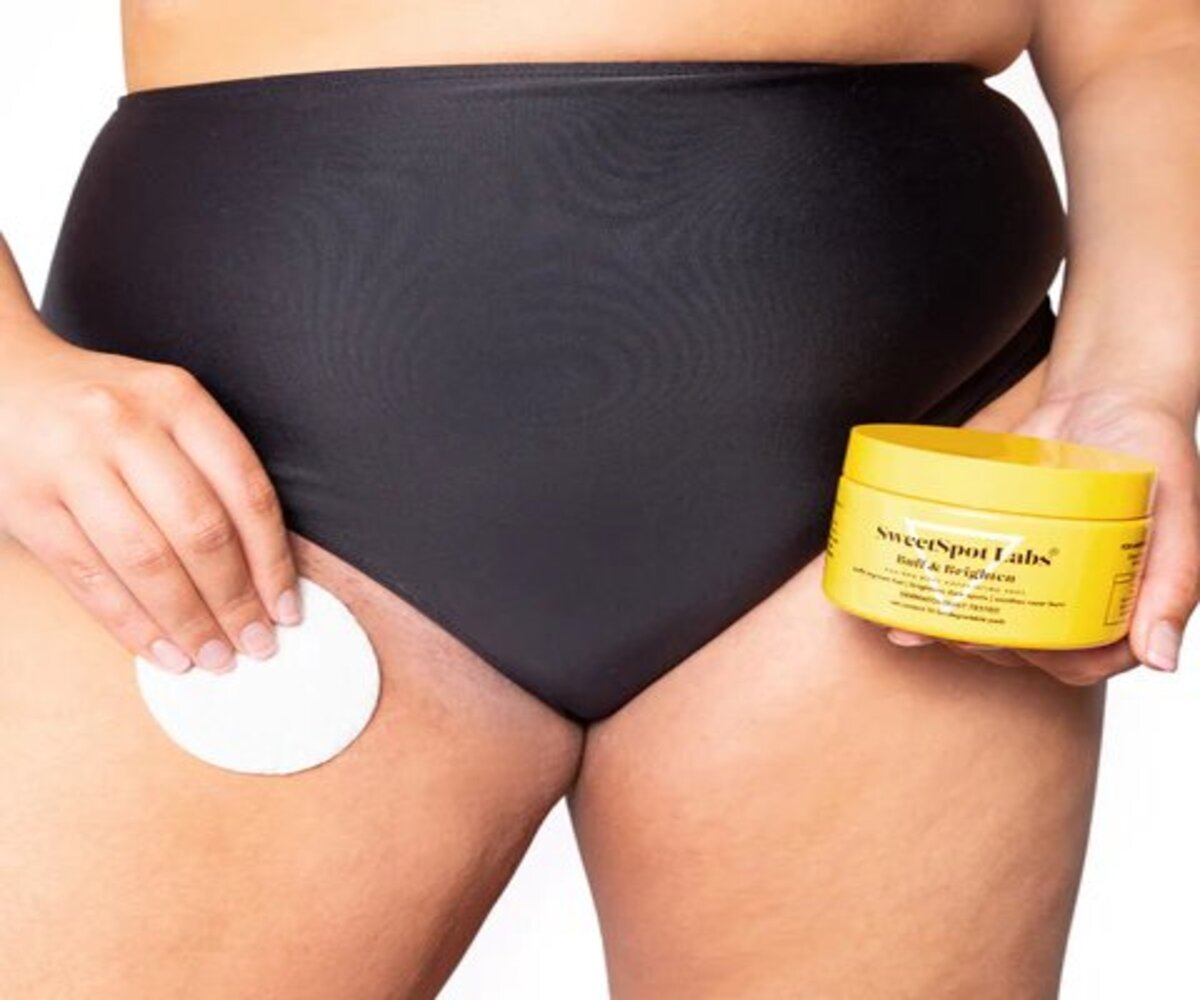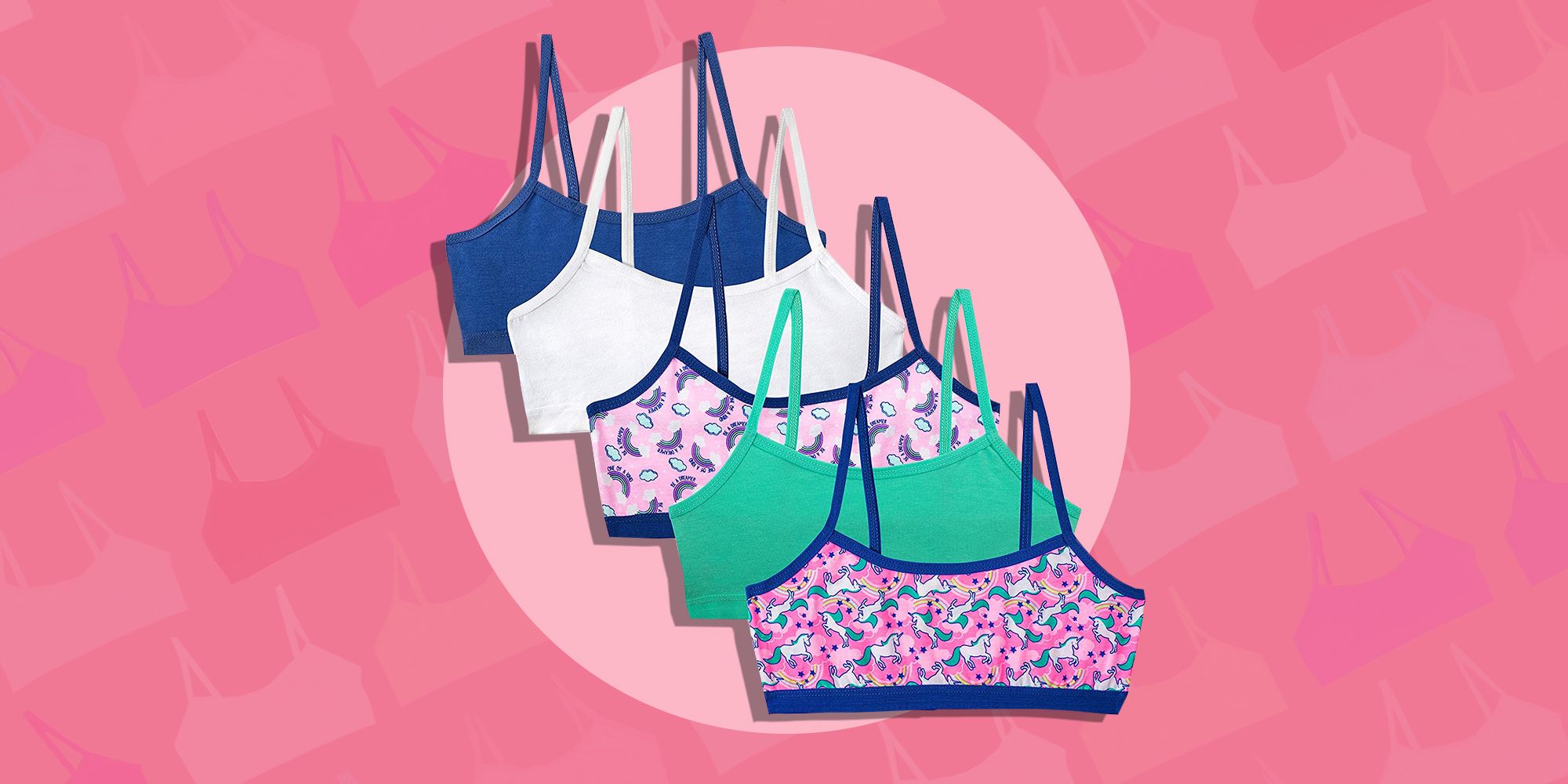Home>How-to Guides>For All>How To Start An Underwear Line


For All
How To Start An Underwear Line
Modified: August 2, 2023
(Many of the links in this article redirect to a specific reviewed product. Your purchase of these products through affiliate links helps to generate commission for Under-tec.com, at no extra cost. Learn more)
Table of Contents
- Introduction
- Researching the Market
- Identifying Your Target Audience
- Creating a Unique Brand Identity
- Designing Your Underwear Collection
- Sourcing Materials and Manufacturers
- Establishing Pricing and Margins
- Creating a Business Plan
- Setting Up Your Online Presence
- Marketing and Promoting Your Underwear Line
- Launching and Scaling Your Business
- Conclusion
Introduction
Welcome to the exciting world of starting your own underwear line! With the increasing demand for unique and innovative lingerie, there has never been a better time to delve into this thriving industry. Whether you’re driven by a passion for fashion or a desire to provide women and men with comfortable and stylish undergarments, this guide will take you through the essential steps of launching and growing your own underwear business.
But before we dive into the nitty-gritty details, let’s take a moment to understand why starting an underwear line can be a great opportunity. The global underwear market is projected to reach a value of over $200 billion by 2025, driven by factors such as changing consumer preferences, increased awareness of intimate apparel, and a growing focus on body positivity.
Research shows that consumers are looking for more than just basic undergarments; they want products that reflect their personality, provide comfort, and are made with high-quality materials. This presents a golden opportunity for entrepreneurs like you, who can offer unique designs and cater to specific niches within the market.
However, starting an underwear line requires more than just a passion for fashion. It requires careful planning, thorough market research, and a deep understanding of your target audience. From designing your collection to establishing your brand identity and marketing your products, each step is crucial for your success.
In this guide, we will walk you through the various stages of starting your own underwear line. You will learn how to identify your target audience, create a unique brand identity, design your collection, source materials and manufacturers, establish pricing and margins, create a business plan, set up your online presence, and effectively market and promote your products. By following these proven steps, you’ll be well-equipped to launch and scale your underwear business.
So, if you’re ready to embark on this exciting journey, let’s get started and turn your dream of owning a successful underwear line into a reality!
Researching the Market
Before diving headfirst into launching your underwear line, it’s crucial to conduct thorough market research. Understanding the current trends, consumer preferences, and competition will provide you with valuable insights to shape your business strategy and differentiate your brand.
Begin by researching the overall underwear market, including the different segments such as women’s lingerie, men’s underwear, and activewear. Identify the key players in these segments and study their product offerings, pricing, and marketing strategies. This will help you gain a competitive edge and identify gaps in the market that your brand can fill.
Next, zoom in on your target audience. Determine the demographics, preferences, and purchasing behaviors of the customers you aim to serve. Are you targeting women who prioritize comfort and functionality, or men who value style and durability? Are you catering to a specific age group or body type? Conduct surveys, interviews, and analyze relevant market data to gather invaluable insights.
Additionally, keep a keen eye on emerging trends in the fashion industry. Stay updated with the latest designs, styles, and materials favored by consumers. This will help you infuse innovation into your collection and stay ahead of the curve.
To gather comprehensive market research, consider the following strategies:
- Online Research: Utilize search engines, industry blogs, and social media platforms to gather information about competitors, market trends, and consumer preferences. Join online forums and communities to engage with potential customers and gain insights from their experiences.
- Trade Shows and Events: Attend industry trade shows, exhibitions, and fashion events to connect with suppliers, manufacturers, and other professionals in the underwear industry. Observe the latest collections, network with key players, and gain inspiration for your own brand.
- Feedback and Surveys: Conduct surveys, focus groups, and interviews to gather feedback from your target audience. Ask questions about their underwear preferences, shopping habits, and what they feel is lacking in the current market. This will help you tailor your offerings to meet their needs.
By investing time and effort in researching the market, you’ll gain valuable insights that will shape your brand positioning and product offering. This knowledge will be instrumental in creating a unique underwear line that resonates with your target audience and sets you apart from the competition.
Identifying Your Target Audience
Identifying your target audience is a crucial step in starting a successful underwear line. Understanding who your ideal customers are will help you tailor your products, marketing efforts, and brand messaging to resonate with them on a deeper level. By targeting a specific audience, you can build a loyal customer base and create a strong brand identity.
Start by considering the demographics of your target audience. Are you targeting women, men, or both? What is their age range? Are you focusing on a specific body type or size inclusivity? Understanding these factors will help you design lingerie that meets their unique needs and preferences.
In addition to demographics, delve deeper into the psychographics of your target audience. What are their interests, values, and lifestyles? Do they prioritize sustainability, comfort, or fashion-forward designs? Understanding their motivations and preferences will allow you to create underwear that aligns with their desires.
Conduct market research, analyze competitor offerings, and gather customer feedback to gain a clearer understanding of your target audience. Engage with your potential customers through social media platforms, online forums, and surveys to gather insights directly from them.
Furthermore, it’s important to consider the various customer segments within your target audience. For example, if you’re targeting women, you may have different product lines for young adults, working professionals, and new mothers. By tailoring your offerings to specific segments, you can provide a personalized experience and better meet their unique needs.
Developing buyer personas can be a useful tool in identifying your target audience. These fictional representations of your ideal customers can help you visualize their characteristics, needs, and motivations. Include details such as age, occupation, lifestyle, preferences, and pain points. This will guide your decision-making process from product design to marketing strategies.
Remember, it’s crucial to continuously monitor and adapt to changes in your target audience’s preferences. Stay engaged with your customers, seek their feedback, and be open to evolving your brand to better serve their evolving needs.
By deeply understanding and identifying your target audience, you can build a brand that speaks directly to their desires, creating a loyal following and gaining a competitive edge in the market.
Creating a Unique Brand Identity
In the crowded market of underwear, creating a unique brand identity is crucial to stand out from the competition and attract customers. Your brand identity encompasses various elements, including your brand name, logo, design aesthetic, and brand values. It’s what sets you apart from other underwear brands and connects with your target audience on a deeper level.
Start by defining your brand’s mission and values. What do you want to represent? Is your brand focused on sustainability, inclusivity, or body positivity? Determine the core values that align with your target audience and build your brand narrative around them.
Next, brainstorm a memorable and meaningful brand name that resonates with your audience and reflects your brand’s identity. Consider the emotions, qualities, and imagery you want to evoke. Ensure that the name is not only unique but also easy to remember and pronounce.
Once you have a brand name in mind, design a visually appealing and versatile logo. Your logo should be a visual representation of your brand’s personality and values. It should be distinct, eye-catching, and easily recognizable. Consider working with a professional designer to ensure a high-quality and cohesive brand image.
In addition to the logo, develop a consistent design aesthetic that runs through all aspects of your brand. This includes packaging, website design, social media graphics, and advertising materials. A consistent and visually appealing look will help reinforce your brand identity and create a memorable impression on your customers.
When it comes to creating a unique brand identity, storytelling plays a crucial role. Craft a compelling brand story that communicates your brand’s values, mission, and the inspiration behind your collection. Share this story through your website, social media platforms, and other marketing channels to connect with your audience on an emotional level.
Maintain consistency in your brand voice and messaging across all communication channels. Whether it’s your website, product descriptions, or social media captions, make sure the language and tone reflect your brand’s identity and resonate with your target audience.
Lastly, build a strong online presence. Create a user-friendly and visually appealing website that showcases your collection and brand story. Utilize social media platforms such as Instagram, Facebook, and Pinterest to engage with your audience, share behind-the-scenes content, and build a community around your brand.
Remember, creating a unique brand identity takes time and effort. Continuously listen to your customers, adapt to their feedback, and stay true to your brand values. By creating a strong and authentic brand identity, you’ll differentiate yourself in the market and establish a loyal customer base.
Designing Your Underwear Collection
The design of your underwear collection is the heart and soul of your brand. It’s what sets you apart from your competitors and draws customers to your products. Designing an appealing and cohesive collection requires careful consideration of various factors, including style, functionality, and target audience preferences.
Start by understanding the needs and desires of your target audience. Conduct market research, analyze competitor offerings, and gather customer feedback to gain insights into what styles, materials, and features resonate with them. This will help you design a collection that meets their specific needs and preferences.
Consider the different styles of underwear you want to offer. From briefs and boxers to thongs and boyshorts, choose styles that align with your target audience’s preferences. Decide whether you want to cater to both men and women or focus on a specific gender.
Next, focus on the fabrics and materials used in your collection. Opt for high-quality, comfortable, and durable fabrics that provide a luxurious feel. Consider using eco-friendly and sustainable materials to appeal to customers who prioritize sustainability.
Pay attention to the fit and sizing of your underwear. Aim to provide a range of sizes that cater to various body types, as inclusivity is a growing demand in the market. Work with a professional pattern maker to ensure that your underwear provides a comfortable and flattering fit for your target audience.
Incorporate your brand’s design aesthetic and unique style into your collection. Whether it’s through intricate lace details, bold prints, or minimalist designs, infuse your signature touch that sets you apart from other brands. Maintain consistency in design elements, such as color palette and patterns, throughout your collection to create a cohesive and recognizable brand image.
Consider practical elements as well, such as added support, moisture-wicking properties, or seamless construction. Innovate features that enhance the functionality and comfort of your underwear, providing customers with added value beyond just aesthetics.
Don’t forget about packaging! Design visually appealing and eco-friendly packaging that reflects your brand’s identity. Consider using sustainable materials and incorporate your logo and brand colors to create a memorable unboxing experience for your customers.
Once you have initial designs, conduct prototype tests and gather feedback from a diverse group of individuals to ensure your collection meets their expectations. Be open to making revisions and improvements based on this feedback before moving forward to production.
Remember, your underwear collection is a reflection of your brand’s identity and values. Pay attention to detail, prioritize comfort and style, and constantly seek feedback from your target audience. By designing a unique and appealing collection, you’ll attract customers and establish your brand in the competitive industry of underwear.
Sourcing Materials and Manufacturers
One of the key elements in successfully launching your underwear line is sourcing high-quality materials and finding reliable manufacturers. The quality of your materials and the expertise of your manufacturing partners will directly impact the final product and the satisfaction of your customers. Here are some steps to consider when sourcing materials and manufacturers for your underwear line.
Start by researching and identifying reputable suppliers of materials that align with your brand values and product requirements. Look for suppliers that offer high-quality fabrics, trims, elastics, and other components needed for your underwear collection. Consider factors such as sustainability, durability, and comfort when selecting materials.
Attend trade shows and industry events to connect directly with suppliers, view their products, and discuss potential partnerships. Networking with other professionals in the industry can also provide valuable recommendations and insights for sourcing materials.
Request samples from different suppliers to evaluate the quality, texture, and performance of their materials. Testing the samples will help you determine which supplier offers the best combination of quality, cost, and sustainability.
Next, find manufacturers who have experience in producing underwear. Look for manufacturers with a proven track record, strong quality control processes, and the capacity to handle your production volume. Consider factors such as production turnaround time, minimum order quantities (MOQs), and their ability to accommodate customization options.
Reach out to multiple manufacturers and request quotes for your specific requirements. Be sure to ask about their production capabilities, quality control measures, and certifications to ensure compliance with industry standards.
Arrange meetings or virtual discussions with potential manufacturers to discuss your project in detail. Share your designs, specifications, and expectations to ensure they can meet your requirements. Building a good working relationship with your manufacturer is essential for a smooth production process.
Request samples or prototypes from potential manufacturers to gauge the quality of their workmanship, fit, and overall product finish. This will allow you to assess their ability to bring your designs to life accurately.
Consider the location of your manufacturers. Working with manufacturers in the same country or region can provide advantages such as easier communication, shorter lead times, and reduced shipping costs. However, don’t limit yourself to local options if there are reputable manufacturers elsewhere that meet your needs more effectively.
Negotiate pricing, production timelines, and other terms with your chosen manufacturer. Clearly define your expectations and ensure that all agreements are documented in a contract to avoid any misunderstandings.
Regularly communicate and maintain a good relationship with your suppliers and manufacturers. This will help ensure a smooth production process, timely delivery of materials, and consistent quality in your final products.
Remember, sourcing materials and finding reliable manufacturers is a critical step in the success of your underwear line. Take the time to research and select the best partners who align with your brand values and can deliver the quality and consistency you need to satisfy your customers.
Establishing Pricing and Margins
Setting the right pricing for your underwear line is crucial for the success and profitability of your business. It requires careful consideration of various factors, including production costs, market positioning, target audience, and desired profit margins. Here are some key steps to help you establish the pricing and margins for your underwear collection.
Start by calculating your production costs. This includes the cost of materials, labor, packaging, shipping, and any overhead expenses associated with running your business. It’s important to have a clear understanding of the costs involved in producing each piece of underwear.
Analyze the pricing strategies of your competitors. Take note of the price ranges for similar products in the market, considering the quality, design, and brand positioning of these products. This will help you determine where your pricing falls within the market landscape.
Consider your target audience and their purchasing behavior. Are they willing to pay a premium for sustainable, high-quality underwear? Or are they more price-sensitive and focused on affordability? Understanding the value perception of your target audience will help you determine the appropriate pricing strategy.
Calculate your desired profit margins. Determine the level of profitability you aim to achieve and set your retail prices accordingly. Take into account factors such as return on investment, long-term sustainability, and the need for reinvestment in marketing and business growth.
Experiment with different pricing strategies to see what works best for your brand and target audience. Options include a value-based pricing strategy, where you focus on the unique value your underwear offers, or a cost-plus pricing strategy, where you add a markup on top of your production costs to determine your retail price.
Consider offering different pricing tiers within your collection. This could include basic styles at a lower price point and premium designs with higher price tags. This allows for a broader range of customers to access your products and caters to varying budget levels.
Don’t forget to account for sales promotions and discounts. Determine how you will handle periodic sales or discounts without compromising your margins. Set guidelines on when and how much to discount to ensure it aligns with your overall pricing strategy.
Regularly review and adjust your pricing strategy based on market trends, customer feedback, and changes in production costs. Stay responsive to market dynamics and competitors’ pricing strategies to remain competitive while maintaining profitability.
It’s important to strike a balance between pricing your underwear competitively and ensuring you can cover your costs and generate a profit. Pricing too low may harm your profitability, while pricing too high may deter potential customers. Constantly evaluate and refine your pricing strategies to maximize revenue and profitability without compromising the value you offer.
Creating a Business Plan
A comprehensive business plan is essential for the success of your underwear line. It serves as a roadmap that outlines your goals, strategies, and financial projections. Creating a business plan allows you to clarify your vision, mitigate risks, and present a compelling case to potential investors or lenders. Here are key elements to include when creating a business plan for your underwear line.
Executive Summary: Provide an overview of your business, including your mission statement, the products you offer, the target audience, and a summary of your financial projections. This section should be concise and compelling, capturing the essence of your business.
Market Analysis: Conduct a thorough analysis of the underwear market, including trends, customer preferences, target audience demographics, and the competitive landscape. Identify gaps in the market that your brand can fill and explain how your product offerings differentiate from existing competitors.
Product Line and Design: Describe your underwear collection in detail, highlighting the styles, materials used, and the design aesthetics. Explain how your collection meets the needs and preferences of your target audience and discuss any unique features or innovations that set your products apart.
Marketing and Sales Strategy: Outline your marketing and sales plan, including your brand positioning, pricing strategy, promotion strategies, and distribution channels. Specify how you will build brand awareness, attract customers, and establish a loyal customer base. Discuss your planned online presence, including your website, social media strategy, and collaborations with influencers or industry partners.
Operational Plan: Detail your operational processes, including production and sourcing strategies, inventory management, quality control measures, and logistics. Explain how you will ensure efficient operations and maintain product quality and consistency.
Organization and Management: Describe the structure of your organization, including key team members, their roles, and responsibilities. Highlight any relevant experience and expertise in the fashion and retail industry. Discuss your plans for hiring and scaling the team as your business grows.
Financial Projections: Develop a comprehensive financial plan that includes sales forecasts, profit and loss statements, cash flow projections, and break-even analysis. Ensure that your projections are realistic and based on thorough market research. Discuss your funding requirements and how you plan to utilize the investment or loan funds.
Risk Management: Identify potential risks and challenges that your business may face and outline strategies to mitigate them. This could include risks related to production, market demand, competition, or changes in consumer trends. Show that you have a contingency plan in place to address unforeseen circumstances.
Future Growth Plans: Describe your long-term vision for your underwear line. Discuss your plans for scaling the business, expanding the product offerings, entering new markets, or exploring partnership opportunities. Show that you have a clear growth strategy in place to sustain and expand your business in the long run.
Regularly review and update your business plan as your business evolves and market conditions change. It serves as a dynamic document that guides your decision-making processes and helps you stay focused on your goals. With a well-crafted business plan, you’ll be well-prepared to navigate the challenges and seize the opportunities in the competitive landscape of the underwear industry.
Setting Up Your Online Presence
In today’s digital age, establishing a strong online presence is essential for the success of your underwear line. An effective online presence allows you to reach a wider audience, build brand awareness, and drive sales. Here are key steps to consider when setting up your online presence.
Create a Professional Website: Design and develop a user-friendly website that showcases your brand, collection, and brand story. Ensure that your website is visually appealing, mobile-responsive, and easy to navigate. Include high-quality product images, detailed descriptions, and a seamless checkout process to enhance the user experience.
Optimize for Search Engines: Implement search engine optimization (SEO) strategies to improve the visibility of your website in search engine results. Conduct keyword research relevant to your underwear line to identify popular search terms. Optimize your website’s meta tags, headlines, and content with these keywords to increase organic traffic to your site.
Embrace Social Media: Create accounts on popular social media platforms such as Instagram, Facebook, and Pinterest to connect with your target audience. Share visually appealing and engaging content related to your brand, products, and behind-the-scenes moments. Engage with your followers, respond to comments, and collaborate with influencers to expand your reach.
Utilize Influencer Marketing: Collaborate with influencers or bloggers who have a significant following and align with your brand’s values and target audience. Partnering with influencers can help amplify your brand’s reach and increase brand awareness among their followers. It’s important to select influencers who genuinely resonate with your brand and can authentically promote your products.
Implement Content Marketing: Develop a content marketing strategy to provide valuable and relevant content to your audience. This could include writing blog posts on topics related to lingerie, body positivity, or fashion tips. By creating informative and engaging content, you can establish yourself as an authority in the industry and build trust with your audience.
Offer a Seamless Shopping Experience: Ensure that your online store is user-friendly and provides a seamless shopping experience. Implement secure payment gateways, offer a variety of payment options, and provide clear and concise product information. Consider offering free shipping, easy returns, and excellent customer service to enhance customer satisfaction.
Collect and Utilize Customer Data: Implement analytics tools to collect and analyze customer data, such as website traffic, customer demographics, and purchase behavior. Use this data to gain insights into your target audience’s preferences, tailor your marketing efforts, and improve your product offerings.
Engage with Your Audience: Regularly interact with your audience through social media, email newsletters, and customer reviews. Respond to inquiries, provide personalized recommendations, and show appreciation for customer feedback. Building a strong relationship with your customers will foster loyalty and encourage repeat purchases.
Monitor and Adapt: Continuously monitor your online presence using analytics and tracking tools. Identify what strategies are generating the most engagement and sales, and adjust your approach accordingly. Stay agile and adapt to changes in consumer behavior, industry trends, and technological advancements.
Remember, your online presence is a direct representation of your brand. Consistency in branding, engaging content, and exceptional customer service are key to establishing a strong and memorable online presence for your underwear line.
Marketing and Promoting Your Underwear Line
Marketing and promotion are crucial aspects of growing your underwear line and attracting customers. With a well-executed marketing strategy, you can build brand awareness, drive traffic to your online store, and ultimately increase sales. Here are key steps to consider when marketing and promoting your underwear line.
Define Your Unique Selling Proposition (USP): Identify and communicate what sets your underwear line apart from competitors. Whether it’s your unique design aesthetic, sustainable materials, or inclusive sizes, emphasize the value proposition that makes your brand unique.
Targeted Advertising: Utilize social media advertising platforms such as Facebook Ads and Instagram Ads to reach your target audience. Create targeted ads based on demographics, interests, and behavior to maximize the effectiveness of your advertising budget. Monitor and optimize your ads based on performance metrics such as click-through rates and conversions.
Collaborate with Influencers: Partner with influencers or content creators who align with your brand’s values and have a significant following. Collaborations can include product reviews, unboxing videos, or sponsored posts featuring your underwear. Influencer endorsements can increase brand credibility and reach a wider audience.
Create Engaging Content: Develop a content strategy to engage your audience and provide value. This can include blog posts, videos, or social media content that educates, inspires, or entertains your target audience. Focus on topics related to body positivity, self-care, fashion tips, and lifestyle content to create a holistic brand experience.
Utilize Email Marketing: Build an email list of interested customers and engage with them through newsletters and targeted email campaigns. Use email marketing to share product updates, exclusive offers, and personalized recommendations. Segment your email list based on customer preferences and purchase history for more tailored and effective communication.
Host Giveaways and Contests: Organize giveaways and contests through your social media channels to generate excitement and engage your audience. Encourage participants to share your brand with their followers, which can help expand your reach organically. Offer prizes such as free underwear sets, personalized consultations, or exclusive discounts to incentivize participation.
Participate in Industry Events: Attend or exhibit at industry trade shows, fashion events, and pop-up markets to showcase your collection. These events provide opportunities to network, connect with potential customers, and build brand exposure within the industry.
Engage with Social Media Communities: Join online communities, forums, and groups related to lingerie, fashion, and body positivity. Engage with members, answer questions, and provide valuable insights. Building a presence in these communities helps establish your brand as a knowledgeable and trusted authority in the industry.
Offer Referral Programs: Encourage word-of-mouth marketing by implementing a referral program. Offer existing customers incentives, discounts, or loyalty rewards for referring their friends and family to your underwear line. This not only increases brand reach but also rewards loyal customers for their support.
Monitor and Analyze Results: Regularly review your marketing efforts and analyze key metrics such as website traffic, conversion rates, and customer acquisition costs. This data will help you identify what strategies are most effective and make informed decisions for future marketing campaigns.
Remember, effective marketing goes beyond just promoting your products. It’s about building a relationship with your target audience, creating an emotional connection, and providing value. By executing a thoughtful and targeted marketing strategy, you can attract customers, build brand loyalty, and establish your underwear line as a go-to choice in the market.
Launching and Scaling Your Business
After putting in the hard work of designing your collection, establishing your brand, and implementing effective marketing strategies, it’s time to launch your underwear line and start scaling your business. Launching and scaling your business involves careful planning, execution, and continuous adaptation. Here are key steps to consider when launching and scaling your underwear line.
Plan a Strategic Launch: Create a launch plan that includes a timeline, promotional activities, and targeted marketing campaigns. Build anticipation among your audience by teasing product sneak peeks and generating buzz through social media and email marketing. Consider offering exclusive pre-order discounts or limited-time promotions to incentivize early adopters.
Ensure Sufficient Inventory: Stock up on inventory before your launch to meet customer demand. Work closely with your manufacturers to establish production timelines and manage inventory levels. Consider factors such as seasonality and lead times to ensure that you have enough stock to fulfill orders and avoid stockouts.
Provide Exceptional Customer Service: Offer excellent customer service to create a positive brand experience. Respond promptly to customer inquiries, address any concerns professionally, and take feedback into account for continuous improvement. Providing exceptional customer service builds customer loyalty and can lead to positive word-of-mouth recommendations.
Collect and Utilize Customer Feedback: Encourage customers to provide feedback on their experience with your underwear line. This feedback will help you identify areas for improvement and understand customer preferences. Use feedback to refine your product offerings, marketing strategies, and overall business operations.
Diversify Sales Channels: Expand beyond your online store by exploring additional sales channels. Consider partnering with select boutiques, department stores, or online marketplaces that align with your brand. This allows you to reach a wider customer base and increase brand visibility.
Pursue Collaborations and Partnerships: Connect with complementary brands or influencers for collaborations or partnerships. These strategic alliances can help you tap into new markets and expand your reach. Whether it’s a joint collection, a co-branded product, or a collaborative marketing campaign, partnerships can amplify your brand’s exposure.
Invest in Customer Acquisition and Retention: Continuously invest in marketing efforts to acquire new customers. Utilize targeted advertising, content marketing, and referral programs to attract prospective customers. At the same time, focus on customer retention through personalized email marketing, loyalty programs, and exclusive offers to keep existing customers engaged and loyal to your brand.
Monitor Key Performance Indicators (KPIs): Regularly track and analyze key metrics such as sales performance, customer acquisition costs, customer lifetime value, and repeat purchase rates. These metrics will guide your decision-making process, help you identify trends, and enable you to make data-driven decisions to drive growth.
Stay Agile and Continuously Innovate: The fashion industry is ever-evolving, so it’s crucial to stay adaptable and embrace change. Continuously seek opportunities for innovation in your product offerings, designs, and customer experiences. Stay informed about market trends, customer preferences, and emerging technologies that can propel your business forward.
Secure Funding for Growth: As your business scales, you may need additional funding to support expansion plans. Explore options such as business loans, crowdfunding, or seeking investment from venture capitalists. A solid business plan, financial projections, and a track record of success will increase your chances of securing funding.
Launching and scaling your underwear line requires perseverance, flexibility, and a customer-centric approach. By executing a well-planned launch, focusing on customer satisfaction, and continuously adapting to market trends, you’ll position your business for long-term growth and success in the competitive lingerie industry.
Conclusion
Congratulations on embarking on the exciting journey of starting your own underwear line! Throughout this guide, we have covered essential steps to help you successfully navigate the competitive landscape of the lingerie industry. From researching the market to designing a unique collection, sourcing materials, and effectively marketing your brand, each step plays a crucial role in the success of your business.
Remember to conduct thorough market research to understand your target audience and identify gaps in the market that your brand can fill. Create a unique brand identity that resonates with your audience and sets you apart from competitors. Pay close attention to designing a high-quality collection that meets the needs of your customers while staying true to your brand’s aesthetic.
Setting up a strong online presence, utilizing effective marketing strategies, and providing exceptional customer service are key to reaching and engaging your target audience. Continuously monitor and adapt your marketing efforts to stay ahead of the curve and build brand loyalty.
As you launch your business and scale, keep a close eye on your financials, prioritize customer satisfaction, and seek opportunities for collaboration and innovation. Stay agile and adaptable to changes in the market, and always listen to feedback from your customers to continuously improve your products and operations.
Remember, building a successful underwear line takes time, dedication, and perseverance. Stay focused on your goals, maintain a strong brand identity, and provide high-quality products that meet the needs and desires of your target audience.
We wish you great success on your journey to creating an exciting and profitable underwear line. As you launch and grow your business, embrace the challenges, celebrate your achievements, and always stay true to your vision and core values. With passion, perseverance, and strategic planning, your underwear line has the potential to make a lasting impact in the industry and bring comfort and confidence to customers around the world.









